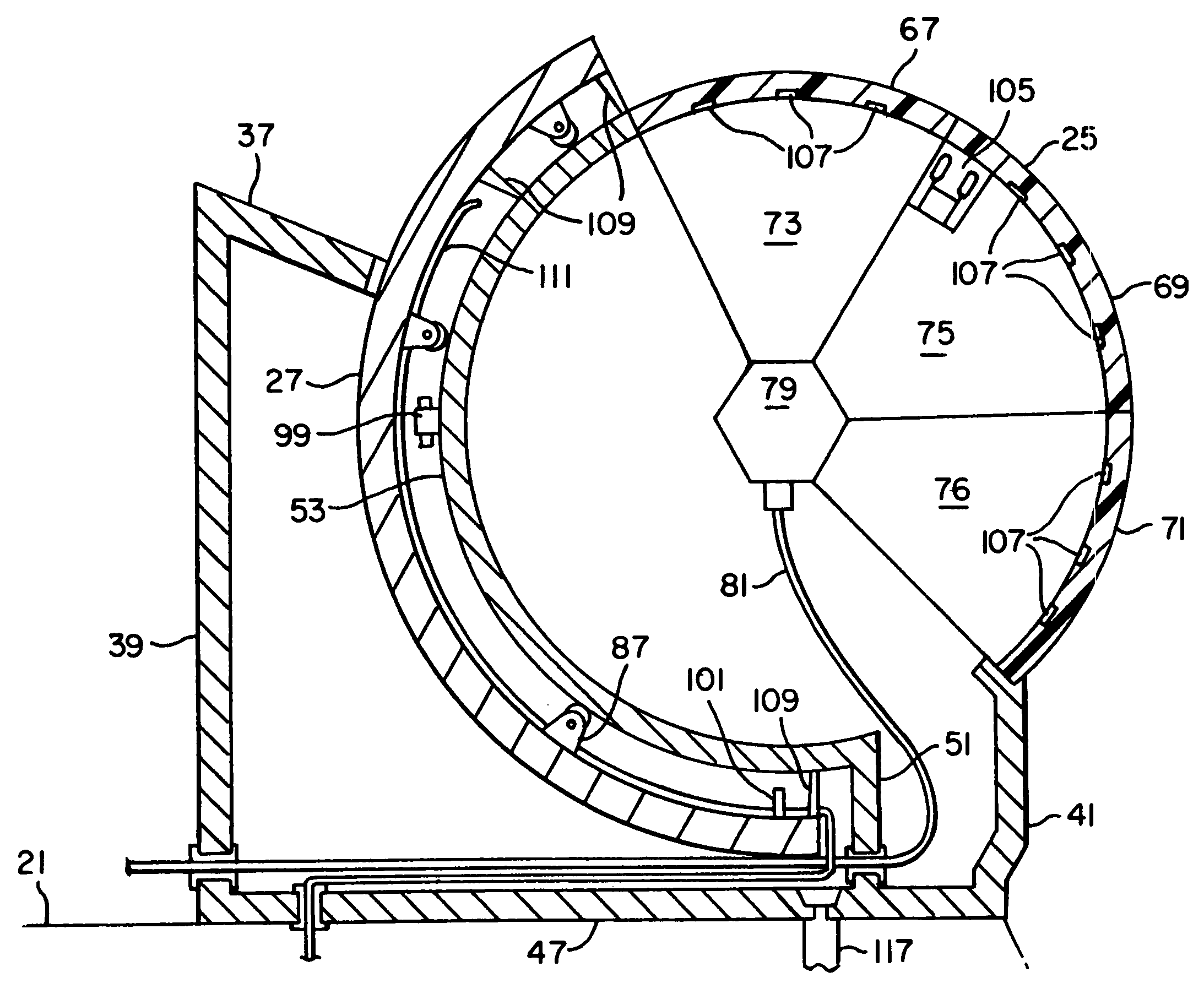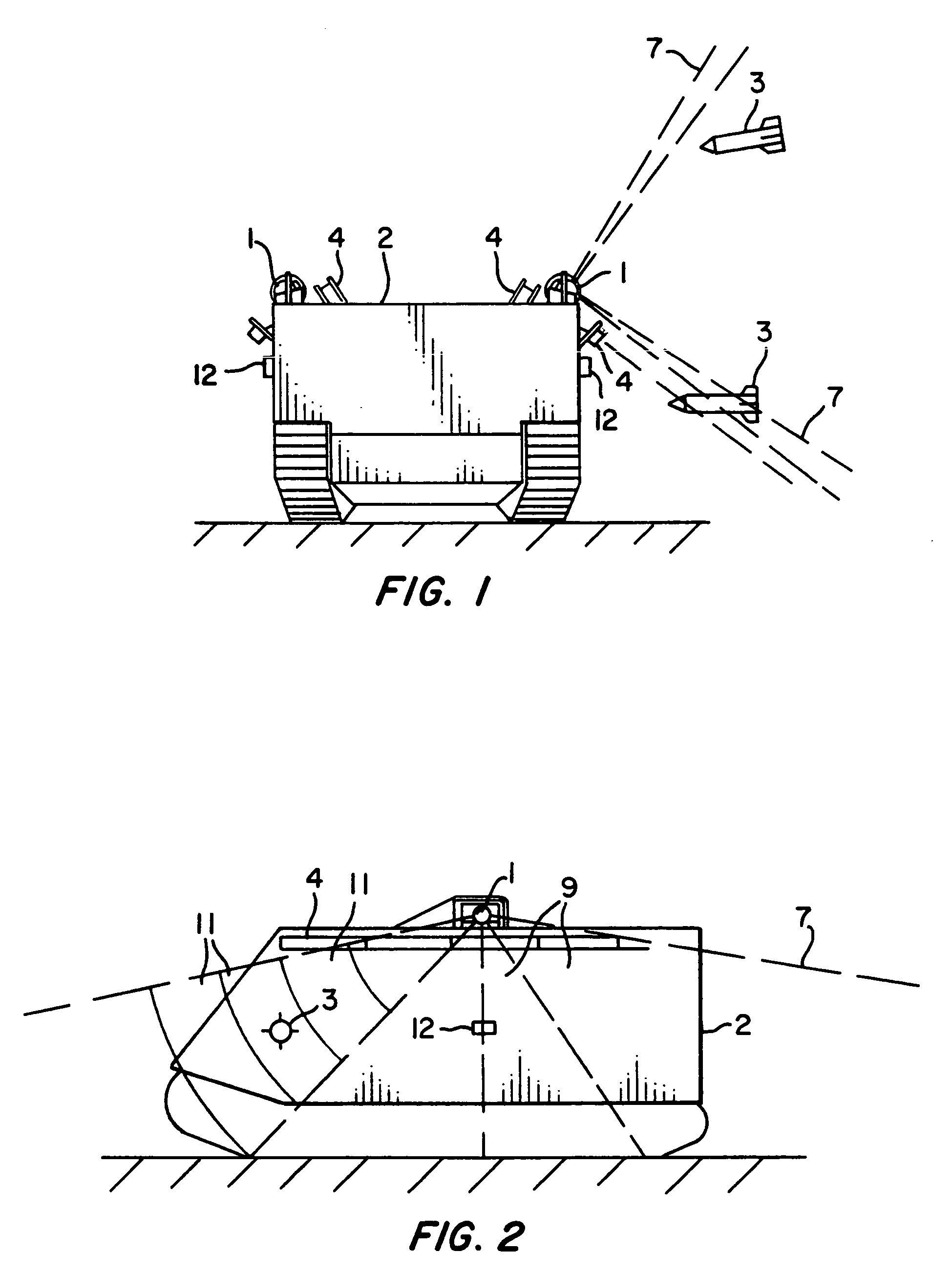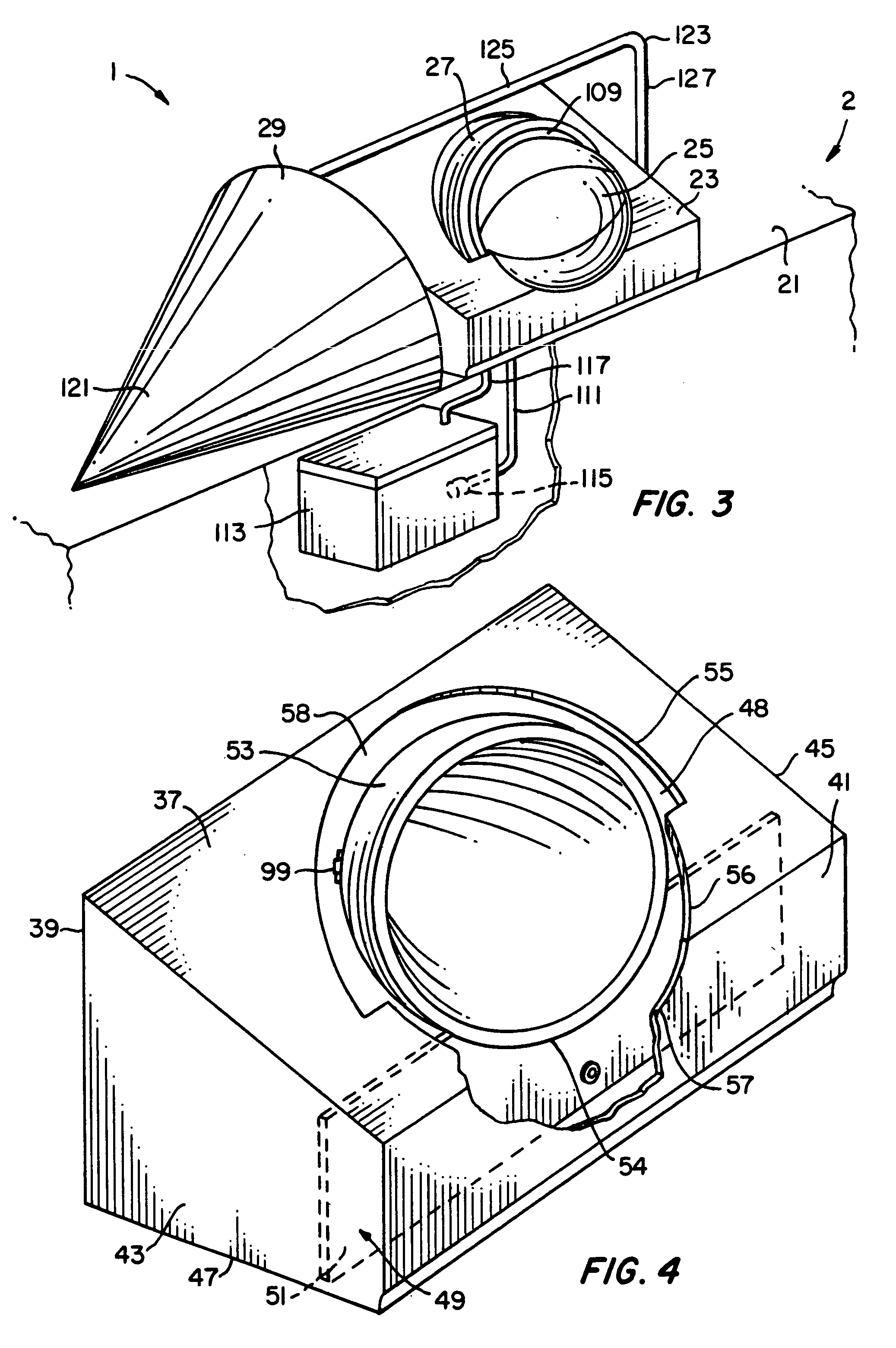Active armor protection system for armored vehicles
- Summary
- Abstract
- Description
- Claims
- Application Information
AI Technical Summary
Benefits of technology
Problems solved by technology
Method used
Image
Examples
Embodiment Construction
[0025]The present invention relates to an armoured vehicle utilizing a sensor system 1 which determines the position of an approaching projectile, and sends a trigger signal to an active armour array. The active armour then detonates a shaped charge to thwart the projectile's attack. In addition, the sensor system 1 distinguishes threatening from nonthreatening objects through the use of doppler and / or thermal sensing.
[0026]FIGS. 1 and 2 are rear and side views, respectively, of an armoured vehicle 2 upon which the sensor system 1 of the present invention is mounted. The sensor system 1 is mounted on the top surface of the armoured vehicle 2. The sensor system 1 can be mounted on any surface as long as the system's position provides it with a clear view of an approaching projectile. It should be noted that the sensor system 1 can be used to defend other types of vehicles, or bunkers by positioning the system so that it will sense an approaching projectile and trigger an active armou...
PUM
 Login to View More
Login to View More Abstract
Description
Claims
Application Information
 Login to View More
Login to View More - R&D
- Intellectual Property
- Life Sciences
- Materials
- Tech Scout
- Unparalleled Data Quality
- Higher Quality Content
- 60% Fewer Hallucinations
Browse by: Latest US Patents, China's latest patents, Technical Efficacy Thesaurus, Application Domain, Technology Topic, Popular Technical Reports.
© 2025 PatSnap. All rights reserved.Legal|Privacy policy|Modern Slavery Act Transparency Statement|Sitemap|About US| Contact US: help@patsnap.com



